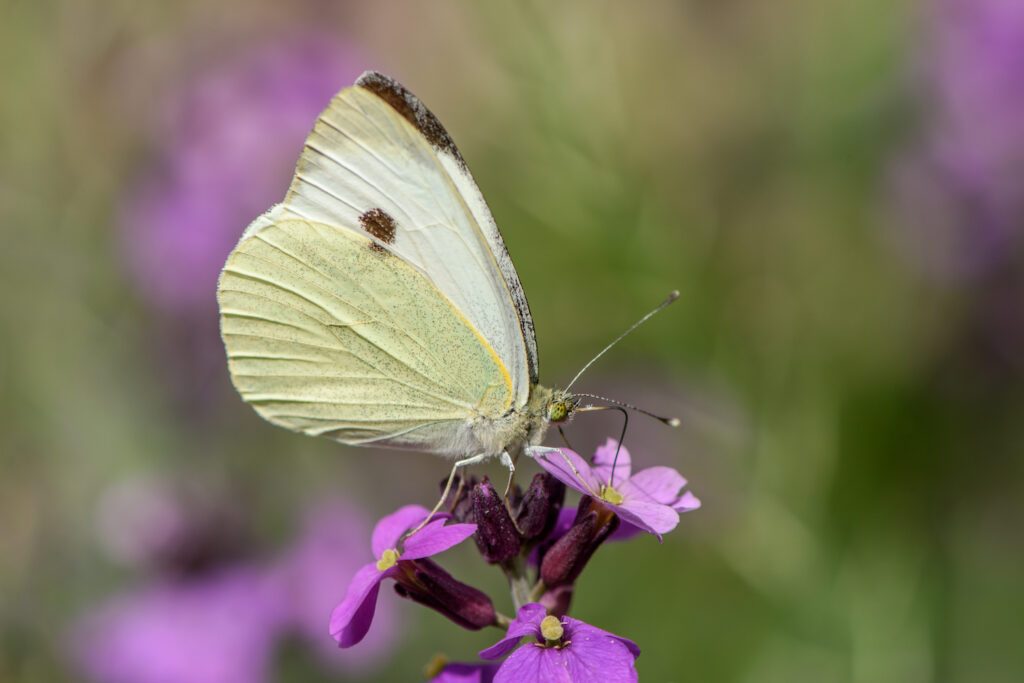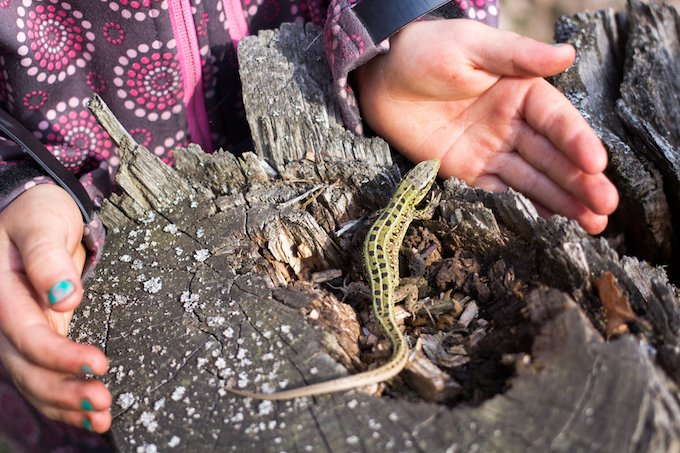How to Turn Your Yard Into a Wildlife Garden
Research shows that one of the strongest predictors of environmental stewardship in adulthood is spending time in nature as a child, especially before age 11. A great way to foster that connection is by creating a backyard wildlife garden together.
Whether it’s a butterfly-friendly flower patch or a hummingbird haven, kids of all ages can help design, plant, and care for a space that welcomes wildlife while offering hours of hands-on fun.

How to Create a Wildlife Habitat
Hold a kid-friendly planning session with your child to discuss what sort of wildlife they want to invite to their garden. Use visuals from websites such as Pinterest, magazines, NWF’s online Activity Finder, and books for inspiration.
A fun way to kick off the project is by taking a scavenger hunt walk at a local park or botanical garden to observe different plants and creatures in action. This real-life inspiration will make their planning even more exciting!
Once your wildlife wish list is determined, spend some time researching the choices together. What does a butterfly need to thrive? What types of plants provide food for hummingbirds? Asking these questions will help your child take ownership of their garden and learn about ecosystems along the way.
From monarch butterflies, ladybugs, and dragonflies to colorful birds, frogs, and salamanders, you and your budding garden designer can create a space that welcomes an exciting group of amazing and beneficial wildlife.
1. Designate a spot for your wildlife garden
Determine the best spot for your garden based on your selections and designate a small area to start planting. Make sure the space allows your children to dig, plant, and explore. Include a little seat for observing wildlife — tree stumps or upcycled wooden crates make great observation spots.
If space is an issue, think small! Container gardens are perfect for attracting butterflies, hummingbirds, and other important pollinators. Have fun selecting pots or containers that fit and complement your space.
Research native species of plants like milkweed, coneflower, and bee balm that can help attract monarch butterflies, hummingbirds, and more to your window sill, balcony, or terrace. You can even get free milkweed seeds for Monarch butterflies.
2. Customize the layout and plants
Encourage kids to put their personal touch on their wildlife habitat garden with hand-decorated birdhouses, stepping stones, or other critter-friendly artwork. There are so many kid-friendly gardening activities, you’ll never run out of ideas!
Simple DIY projects like toad houses and bird feeders are great for encouraging creativity and learning about the needs of different backyard wildlife. Some kids even decorate their gardens for different holidays, turning it into a year-round celebration of nature.
3. Try planting a birthday garden
Help your little gardener plan a birthday garden and planting party for someone special. Plan ahead to select appropriate plants for the space; mix native plants with kid-friendly varieties like marigolds or zinnias for full sun, or impatiens for partial shade.
Set up a table with garden tools and materials to make signs and colorful plant markers. Plan different activities so some guests can dig, while others plant or decorate. It’s a fun way to create something lasting while celebrating a special occasion.
Find plenty of ideas on getting kids in the garden here.
Jump Start Your New Wildlife Habitat
Help your child pick a few budding or blooming native plants that already contain nectar to quickly attract butterflies, hummingbirds, and other pollinators. This can jump-start the garden before seed plantings begin to sprout.
Engage the senses
A truly inviting wildlife habitat appeals to more than just sight! Include:
- Fragrant plants like lavender, mint, and bee balm.
- Textured plants like lamb’s ear or ornamental grasses.
- A small water feature, such as a shallow dish for birds and insects to drink from.
- Movement and sound by adding wind chimes or rustling grasses.
These elements make the garden more engaging for kids and provide essential food, cover, and water for wildlife.
Fun & Simple Wildlife-Friendly Additions
- Build a Mini Pond or Watering Station – Even a small dish with pebbles and water can help butterflies and birds stay hydrated. A shallow dish with mud also supports butterflies’ “puddling” behavior.
- Create a Bug Hotel – Stack small logs, pinecones, and bamboo cuttings in a sheltered corner to encourage pollinators and beneficial insects to take up residence.
- Use Edible Native Plants – Plant native edible berries or herbs like lavender and mint that attract pollinators while providing a fun snack.
- Track Visitors with a Wildlife Bingo or Journal – Kids can mark off birds, bugs, and other creatures they spot, turning it into an ongoing learning activity.
- Compost for a Thriving Garden – Show how simple composting with food scraps nourishes plants naturally and teaches sustainability.
- Seasonal Garden Updates – Adjust the garden seasonally. Plant fall blooms for migrating butterflies or add nesting materials for spring birds.
- Eco-Friendly Pest Control – Teach kids about companion planting, like using marigolds and other fragrant flowers and herbs to deter pests instead of pesticides.
- Nighttime Wildlife Watching – Set up a small solar lantern to observe nighttime pollinators like moths or bats. You might get lucky and spot some owls with your kids, too.
Observe, reflect, learn
Provide your child with a magnifying glass and help them draft notes in journals, draw pictures, or take photos in the garden to reinforce what they have learned and enjoyed.
Add more wildlife lures such as nest boxes, birdbaths, feeders, or brush piles to complement the food and cover that plants provide.
Share or certify your wildlife garden
When your garden is ready, it is eligible to certify as a National Wildlife Federation Certified Wildlife Habitat®. When you’re officially certified, share it on social media with the hashtag #gardenforwildlife.
If you’re looking for fun ideas for celebrating Earth Day with kids, this is a great one! A wildlife garden not only nurtures nature but fosters curiosity, creativity, and a lifelong love of the environment.
More Great Nature Activities for Kids
Here are more ways to get your little one active in the great outdoors:
DIY Organic Bird Feeder
How to Make Sun Print Art
Owling with Kids
Stargazing with Kids
Backyard Bug Count Activity
Fairy Garden Ideas for a Magical Backyard

